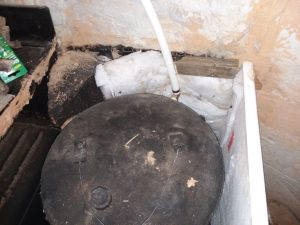 Note the opening to the left of the tank, exhaust gases travel counter clockwise around the tank once the insulated top is installed
Note the opening to the left of the tank, exhaust gases travel counter clockwise around the tank once the insulated top is installed
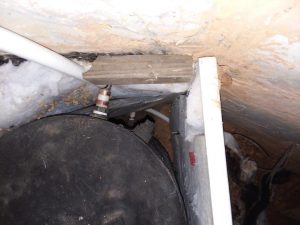 Two water connections to the tank, hot through the upper pipe, cold through the pipe that exits the enclosure botom
Two water connections to the tank, hot through the upper pipe, cold through the pipe that exits the enclosure botom
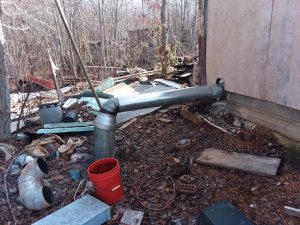 I prefer to think of the junk you see as a parts depository, the stove pipe comes up in the center of a poured concrete 2′ wall from the basement, runs horizontally, then down to the ground
I prefer to think of the junk you see as a parts depository, the stove pipe comes up in the center of a poured concrete 2′ wall from the basement, runs horizontally, then down to the ground
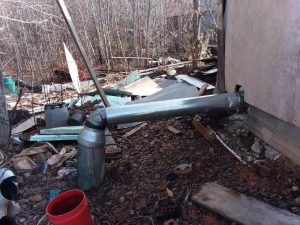 The wider area of the pipe after the angle pointing down houses a small fan,
The wider area of the pipe after the angle pointing down houses a small fan,
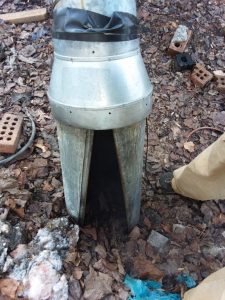 Though it looks solid from the sides, there is actually quite a wide openiong for the exhaust to exit. This configuration keeps the fan dry, allows for a small amount of falling for the exhaust as it cools, and protects pretty well against strong wind
Though it looks solid from the sides, there is actually quite a wide openiong for the exhaust to exit. This configuration keeps the fan dry, allows for a small amount of falling for the exhaust as it cools, and protects pretty well against strong wind
s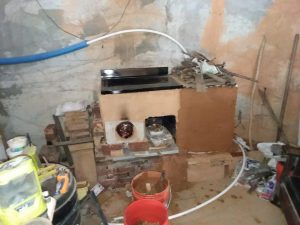 The tank enclosure has an insulated top and sides, with just enough room to circulate exhaust around and over the tank to transfer as much heat as possible to the water.
The tank enclosure has an insulated top and sides, with just enough room to circulate exhaust around and over the tank to transfer as much heat as possible to the water.
Hey, nice build.
I love the way you diverted the exhaust and used a cheap fan to do it.
Have you gotten any weird condensates from the wood smoke?
I know you managed to boil the water in the tank to steam and still have 100 degree exhaust, but it looks like the water lines are made of PEX pipe, and that they run directly into the bell.
PEX has a temperature rating of about 200 degrees F, so is it even PEX I’m looking at?
I want to build outdoors and bring the hot water or better yet, steam , indoors, so I’m very intrigued with your work.
Thanks for the reply!
Good to hear, about the temperature performance of the PEX.
I aim to make a lot of steam at low pressure, so it still might not suit my needs.
The question about the condensates was because of the downward path of the final section.
Because of your fan, you could potentially cool your exhaust till its heavier than the surrounding air, or even condense some of it.
Sounds like you have deposits much further upstream in the system.